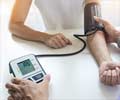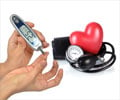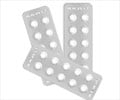Masked hypertension, which is basically normal BP levels in the clinic but higher BP levels when measured at home, may be linked to a greater risk of heart attacks and deaths, a new study found

During a median of 8.3 years (total of 46,593 person-years) of follow-up, 522 participants died and 414 had a fatal or nonfatal cardiovascular event. Compared with patients with optimal blood pressure without masked hypertension, multivariable-adjusted hazard ratios for total mortality for those with optimal clinic BP but masked hypertension were 2.21 (CI, 1.27.85); for those with normal clinic BP but masked hypertension, 1.57 (CI, 1.02.41); and for those with high-normal clinic BP but masked hypertension, 1.54 (CI, 1.07.23).
The authors found that patients with masked hypertension were more likely to be male, to smoke, to have diabetes mellitus or a history of cardiovascular disease, and to be older and more obese. These factors and others were adjusted for in the analysis. They acknowledge that the study did not assess the reproducibility of masked hypertension.
The authors state, "The key finding of our current study is that home blood pressure substantially refines risk stratification at levels of the conventional blood pressure that are presumably associated with no or only mildly elevated risk. In contrast, in severe hypertension, the self-measured home blood pressure did not improve the prediction of death or cardiovascular complications…. Consequently, we suggest that in individuals at risk for masked hypertension, home blood pressure monitoring should be included in the strategy of primary prevention of cardiovascular complications... Properly designed randomized clinical trials are required to demonstrate that identification and treatment of masked hypertension versus the current standard of care, i.e., not to perform home blood pressure measurement and not to treat people with normotension or prehypertension on conventional measurement, leads to a reduction of cardiovascular complications and is cost-effective."
In an accompanying Perspective, Mark Caulfield (Bart's and The London School of Medicine and Dentistry, UK) states, "at every level of blood pressure below 160/100 mm Hg, the additional measurements provided by HBPM [home BP monitoring] improved risk stratification, providing new evidence supporting use of HBPM in routine assessment of risk. This result is important because it could refine risk stratification in normotensive people with optimal, normal or high-normal blood pressure based on CBPM [clinic BP monitoring] who are not conventionally treated. In addition, HBPM showed improved stratification of risk in those with masked hypertension who have normal clinic blood pressure but on HBPM or ABPM [ambulatory BP monitoring] have periods of elevated BP that may be benefit from treatment...With a growing burden of high blood pressure and affordable devices, HBPM could be used to diagnose high blood pressure and help decide whom to treat. It empowers patients to take on a role in assessment of their blood pressure. Now with smart phone applications that accept automated data uploads from HBPM and display blood pressure trends over time, HBPM could help avoid travel and may save time for the healthcare team as they conduct remote consultations exploiting electronic tools for communication."
Advertisement














